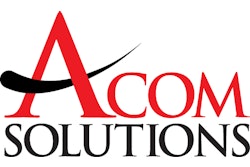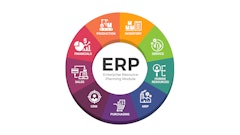Laggards risk losing competitiveness; Hackett's benchmarking study highlights best practices of top performers
Atlanta, GA — August 10, 2004 — The gap between world-class performers and median companies continues to widen across a range of critical performance measures including costs and staffing, according to new research into world-class performance from The Hackett Group, a business advisory firm and an Answerthink company.
This gap should be seen as a potential danger sign for companies that allow themselves to lag behind, Hackett said in announcing its research.
The Hackett Group's 2004 Book of Numbers series, "Performance Metrics and Best Practices of World-Class Companies," provides executive-level insights into how world-class organizations continue to find ways to spend less and reduce headcount while improving overall effectiveness by leveraging best practices across functions such as finance, information technology (IT), human resources (HR), procurement and other areas.
Hackett's research also highlighted five of the most common traits and techniques shared by world-class companies: an overall focus on operational excellence; more effective sourcing strategies; enhanced quality and access to information; standardization and simplification; and improved business alignment.
To be identified by Hackett as world-class, an organization must score in the top 25 percent in both efficiency (cost and productivity) and effectiveness (quality and value) output metrics in a given functional area. In this way, Hackett defines "world-class" with empirical data, isolating the characteristics shared by today's world-class organizations.
Hackett's 2004 research found that world-class companies remain significantly more efficient than their peers at managing costs, and the gap between world-class and median companies is widening. World-class companies spend significantly less in every major operational area, Hackett found.
For example, labor remains the single largest corporate cost center, but world-class companies have significantly less staff dedicated to transactional processing, as they continue to find ways to swap out labor for a combination of technology, outsourcing and process optimization.
In addition, world-class companies relentlessly target cycle time to improve efficiency as well, both for traditional activities like accounts receivable and also for a broad range of strategic activities, such as information delivery. Finally, world-class companies have a significant emphasis on process simplification to improve productivity and leverage key technologies such as self-service and electronic processing, Hackett reported.
According to Hackett's research, world-class companies in finance spent 31 percent less than their median peers on finance operations in 2004. In IT, world-class companies spent 18 percent less per end-user than their median peers. Virtually across the board, they make do with less staff in key areas. For example, world-class organizations dedicate 54 percent less staff per billion of revenue to finance transaction processing than their median peers.
"The economic climate has improved significantly over the past year, but senior executives are still focused on driving out costs and ensuring optimal efficiency," said Hackett Chief Research Officer Richard T. Roth. "World-class companies are better at doing this, which is why the cost gap between world-class and median companies is widening."
Roth added that companies that are squarely in the median today have to realize that this is simply not good enough. "They risk being left behind and may find it difficult to remain competitive," he said. "What is median today may be solidly fourth quartile in a few short years. Our research also clearly shows that companies can have the best of both worlds if they want to, as world-class companies spend less, and are also significantly more effective."
Hackett's research identified five best practices used by world-class companies in virtually every area of sales, general & administrative (SG&A) operations.
Hackett unveiled its 2004 research findings at the recent 14th annual Hackett Best Practices Conference "World-Class Response to the Return of Growth - Balancing Growth, Risk and Competitive Pressures," in Atlanta, attended by more than 200 senior executives.
Atlanta, GA — August 10, 2004 — The gap between world-class performers and median companies continues to widen across a range of critical performance measures including costs and staffing, according to new research into world-class performance from The Hackett Group, a business advisory firm and an Answerthink company.
This gap should be seen as a potential danger sign for companies that allow themselves to lag behind, Hackett said in announcing its research.
The Hackett Group's 2004 Book of Numbers series, "Performance Metrics and Best Practices of World-Class Companies," provides executive-level insights into how world-class organizations continue to find ways to spend less and reduce headcount while improving overall effectiveness by leveraging best practices across functions such as finance, information technology (IT), human resources (HR), procurement and other areas.
Hackett's research also highlighted five of the most common traits and techniques shared by world-class companies: an overall focus on operational excellence; more effective sourcing strategies; enhanced quality and access to information; standardization and simplification; and improved business alignment.
To be identified by Hackett as world-class, an organization must score in the top 25 percent in both efficiency (cost and productivity) and effectiveness (quality and value) output metrics in a given functional area. In this way, Hackett defines "world-class" with empirical data, isolating the characteristics shared by today's world-class organizations.
Hackett's 2004 research found that world-class companies remain significantly more efficient than their peers at managing costs, and the gap between world-class and median companies is widening. World-class companies spend significantly less in every major operational area, Hackett found.
For example, labor remains the single largest corporate cost center, but world-class companies have significantly less staff dedicated to transactional processing, as they continue to find ways to swap out labor for a combination of technology, outsourcing and process optimization.
In addition, world-class companies relentlessly target cycle time to improve efficiency as well, both for traditional activities like accounts receivable and also for a broad range of strategic activities, such as information delivery. Finally, world-class companies have a significant emphasis on process simplification to improve productivity and leverage key technologies such as self-service and electronic processing, Hackett reported.
According to Hackett's research, world-class companies in finance spent 31 percent less than their median peers on finance operations in 2004. In IT, world-class companies spent 18 percent less per end-user than their median peers. Virtually across the board, they make do with less staff in key areas. For example, world-class organizations dedicate 54 percent less staff per billion of revenue to finance transaction processing than their median peers.
"The economic climate has improved significantly over the past year, but senior executives are still focused on driving out costs and ensuring optimal efficiency," said Hackett Chief Research Officer Richard T. Roth. "World-class companies are better at doing this, which is why the cost gap between world-class and median companies is widening."
Roth added that companies that are squarely in the median today have to realize that this is simply not good enough. "They risk being left behind and may find it difficult to remain competitive," he said. "What is median today may be solidly fourth quartile in a few short years. Our research also clearly shows that companies can have the best of both worlds if they want to, as world-class companies spend less, and are also significantly more effective."
Hackett's research identified five best practices used by world-class companies in virtually every area of sales, general & administrative (SG&A) operations.
- Overall Focus on Operational Excellence - Across a broad range of metrics, world-class companies focus on operational excellence and generate superior results. For example, world-class finance organizations close their books more quickly, and world-class IT organizations complete significantly more projects on time and under budget. Finally, they see significantly lower rates of voluntary turnover, in part due to allocating more staff to address employee life cycle issues.
- Effective Business Process Sourcing Strategies - Most world-class companies move to hybrid sourcing strategies that combine shared services and outsourcing. Across many common finance operations such as credit, accounts receivable, and accounts payable, for example, world-class companies leverage shared services anywhere from 25 to 140 percent more often than median companies. World-class companies also use outsourcing, often to drive down costs. World-class companies spend 23 percent less than their median peers on IT infrastructure and 27 percent less on HR processes per employee, and increased use of outsourcing is a significant factor in both cases.
- Enhanced Quality and Access to Information - World-class companies dramatically improve data access both by creating a common data repository and, perhaps more importantly, giving management the tools and training to leverage this information and guide strategic planning, budgeting, and forecasting They also drive to dramatically lower error rates across the board. World-class companies are 105 percent more likely than median companies to generate business performance reports from a centralized data repository. In procurement, world-class companies see significantly lower error rates across a range ofareas, including pricing, quantity, wrong items ordered, and late payments to suppliers.
- Standardization and Simplification - World-class companies understand that complexity drives up costs and increases cycle time. Executives at the companies challenge their organizations to evaluate the true business benefit when they want to deviate from standards. World-class companies also more fully leverage technology to successfully execute on corporate strategy, in the process often consolidating ERP vendors, increasing application integration, and driving greater standards adherence. For example, they rely on 67 percent fewer database platforms per 1000 end-users than their median peers, and have 46 percent fewer compensation plans.
- Business Alignment - World-class companies closely align strategic and tactical plans, enabling functional areas to contribute more effectively to overall business goals. Finally, world-class companies abandon traditional functional processes in favor of process-driven cross-functional teams. More importantly, they are more effective at aligning operational areas with strategic business goals, and provide greater value to their companies. For example, world-class companies are 45 percent more likely to have IT participation at the senior management level, and HR organizations are 67 percent more likely to link people strategies to business strategies.
Hackett unveiled its 2004 research findings at the recent 14th annual Hackett Best Practices Conference "World-Class Response to the Return of Growth - Balancing Growth, Risk and Competitive Pressures," in Atlanta, attended by more than 200 senior executives.
















